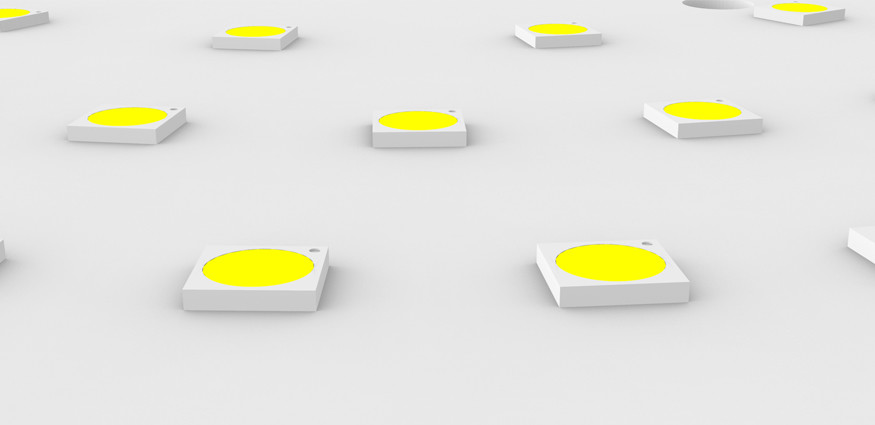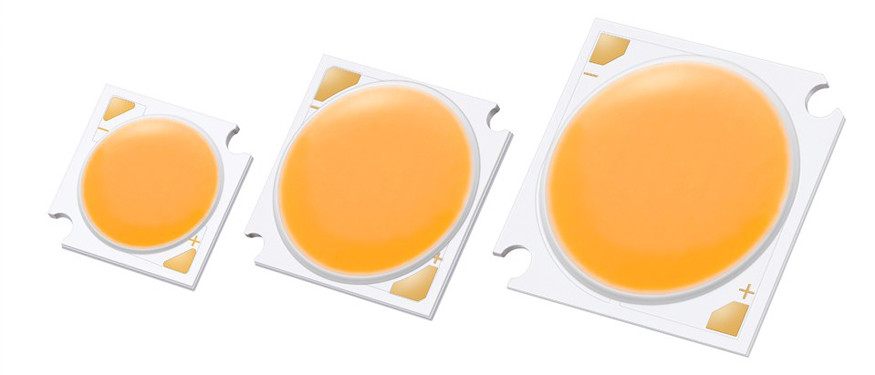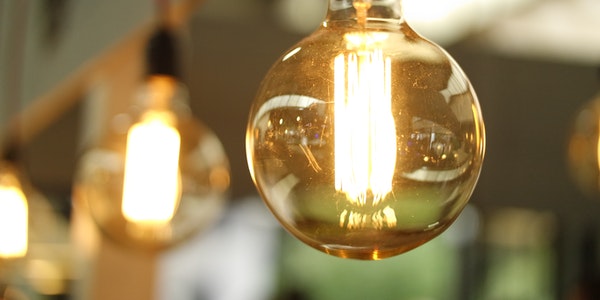The pros and cons of LED lights
Light-emitting diode (LED) is the latest generation of lighting technology and a revolutionary invention in the field of lighting. Its advantages are very obvious—up to 200lm/W light efficiency, durability and up to 50000H service life. The solid-state semiconductor light-emitting technology of LED makes its life span more than 10 times longer than that of incandescent or fluorescent lamps. As a result, LED lamps have many advantages that fluorescent lamps, HPS or MH lamps cannot match.
In fact, diodes have been used in the traditional electronics industry for many years. However, the large-scale application of light-emitting diodes and the field of lighting are only the past two decades. Its characteristics of high luminous efficiency, long life, wide color temperature and customized color rendering index make it replace more than 60% of the world’s traditional lighting in just over 10 years.
After these years of development, the technology of LED lighting products has become increasingly mature and the performance has become increasingly stable. Because of its own unique advantages, LED lights have been widely used in a variety of different occasions, including architectural lighting of stadiums and bridges, office buildings, infrastructure lighting, such as street, park lighting or tunnel lighting. The main light sources in production plants, warehouses, offices, laboratories, and school spaces also prefer LEDs.
LEDs are used to replace traditional lighting such as CFL and HPS lamps. LED light sources are generally divided into two categories: SMD and COB. The power of a single light source for ordinary civil lighting is 0.5W to 5W. And the power of a single light source for industrial use ranges from 10W to 50W. This article will mainly discuss the advantages and disadvantages of LED lighting. Do you know which ones?
The shortcomings of LED lighting
Let’s first take a look at the shortcomings of LED lighting.
Temperature sensitivity
The working environment temperature has a great influence on the working performance and lifespan of the light-emitting diode. High temperature will increase the current parameters flowing through the semiconductor components, and some LED modules are not resistant to high temperatures. As a result, one or several components may be burned out, which may lead to damage to the entire lamp. Therefore, in some special occasions, such as steel mills, petrochemical plants, oil refineries, and thermal power plants, high-temperature LED lights that need special treatment to meet the needs.
Cost
LED lighting uses expensive raw materials (such as gold wire) and complex packaging processes, so the cost is much higher than that of traditional lamps. However, if we look at it from another perspective, the lifespan of LED lamps is more than 5 years, which is much longer than ordinary bulbs. At the same time, its energy consumption is only 1/5 of the energy consumption of traditional bulbs. The price of a good-quality LED lamp tends to discourage consumers and choose to buy 5-10 traditional types of lamps, but in the long run, the energy consumed will make us pay even higher costs.
Advantages of LED lighting
Color of light
The three primary colors refer to the three colors of red, green and blue. The human eye is most sensitive to red, green and blue. Most of the colors can be produced by combining the three colors of red, green and blue in different proportions. Similarly, most monochromatic light can be decomposed into three colors of red, green and blue.
Light-emitting diodes are referred to as LEDs for short. Like ordinary diodes, light-emitting diodes are composed of a PN junction and also have unidirectional conductivity. When the forward voltage is applied to the light-emitting diode, the holes injected from the P area to the N area and the electrons injected from the N area to the P area are respectively in contact with the electrons in the N area and the voids in the P area within a few microns of the PN junction. The holes recombine and produce spontaneous emission fluorescence.
The energy states of electrons and holes in different semiconductor materials are different. When electrons and holes recombine, the energy released is somewhat different. The more energy released, the shorter the wavelength of the emitted light. Commonly used are diodes that emit red, green or blue light.
Scientists add yellow phosphors to blue LEDs to obtain white LEDs. Using this phosphor technology, LEDs of any color light (such as purple light and pink light) can be manufactured. The emergence of blue and white LEDs has broadened the application fields of LEDs, making it possible for applications such as full-color LED display and LED lighting.
Environmentally friendly
The LED lamp has low heat, no heat radiation, cold light source, can be touched safely, can accurately control the light type and luminous angle, light color, no glare, no mercury, sodium and other substances that may be harmful to health.
LED light source is conducive to environmental protection. LED is an all-solid luminous body, impact resistant and not easily broken, waste can be recycled, no pollution, reduction of a large amount of harmful gases such as sulfur dioxide and nitrogen, and greenhouse gases such as carbon dioxide, and improvement of people’s living environment. It can be called a “green lighting source.”
Led lamp is a new type of green environmental protection light source: LED uses cold light source, with little glare, no radiation, and no harmful substances are produced during use. The working voltage of LED is low, it adopts DC drive mode, ultra-low power consumption, electro-optical power conversion is close to 100%, and it can save more than 80% energy than traditional light sources under the same lighting effect. LED has better environmental benefits. There is no ultraviolet and infrared in the spectrum, and the waste is recyclable, can be touched safely, has no pollution, and does not contain mercury. It belongs to the new era of energy-saving green lighting sources.
Heat dissipation
There are several ways to dissipate heat:
Natural heat dissipation
Natural heat dissipation refers to working directly in the LED lamp without external measures. The main principle is to make the entire tube of the LED lamp have a larger contact area with the air, and to use components with better thermal conductivity. This can better transfer the heat generated by the lamp to the air, and then through natural convection, that is, the hot air rises and the cold air compensates, so as to achieve the purpose of heat dissipation of the LED lamp. Natural heat dissipation mainly uses heat sinks, lamp housings, system circuit boards, etc., and its cost is relatively low, and the heat dissipation effect is better. It is widely used in various electrical equipment.
Electromagnetic heat dissipation
Electromagnetic heat dissipation is called electromagnetic jet heat dissipation. Instead of using a fan for gas convection, electromagnetic vibration drives the film cavity to vibrate to circulate air to achieve the effect of heat dissipation. The technical difficulty is relatively complicated. At present, some LED products have been applied. Temperature can change the physical form and chemical structure of objects. Some are better, such as cooking and cooking, and some are not good, such as scalding and burning.
When using LED lights, we don’t want it to generate so much heat. In addition to improving the electro-optical conversion efficiency, only heat dissipation measures can be added. It is not difficult to find that the above-mentioned centralized heat dissipation measures are not in conflict, and can be used in combination, and should not be overly superimposed to meet the heat dissipation requirements of LED lights, and can be accepted and recognized by the public.
High light efficiency
LED is the most energy efficient energy source at present, with luminous efficiency as high as 130lm/W~200lm/W, which is several times higher than the luminous efficiency of traditional metal halide lamps, fluorescent lamps, incandescent lamps or HPS lamps. So its energy consumption (electricity) is much less. In traditional lighting, 80-90% of the electrical energy is converted into heat, and only 10%-20% of the energy is converted into light. Therefore, the light conversion efficiency of traditional lamps is low. The LED lamp is just the opposite, 80% of the electrical energy is converted into light output.
LED lights also have excellent impact resistance and high temperature resistance. LED lights do not contain any fragile elements such as filaments or glass, which are easily broken when subjected to bumps and impacts. The structure of high-quality LED lights uses high-quality plastic and aluminum parts to make the LED lights more durable and resistant to vibration, low temperature and high temperature.
Long Lifespan
The biggest advantage of LED lights is their long life. The service life of energy-saving lamps is less than one year, and the service life of MH lamps, CFL lamps and HPS is about 2 years. In contrast, the life of LED lamps is as long as 5 years, which means that after 5 years of use, the lamp’s luminous flux maintenance rate can still reach 60%, and then it can continue to be used for 5 years. In addition, it has been proven that frequent turning on and off will not have a negative impact on the lamp, and the life of the old o-type fluorescent lamp will be greatly shortened in this case.


